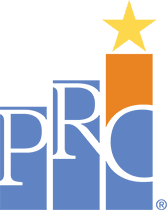As part of PRC’s celebration of Patient Experience Week with the Beryl Institute, we’re publishing a series of four daily blog posts discussing key elements of an excellent patient experience: communication, teamwork, safety, and timeliness.
Historically, 2018 is one of the best times to be a patient. In addition to the mere existence of hospitals, 21st century patients are largely blessed with technologies such as antibiotics, MRI machines, and well-trained professionals holding the scalpel. Nonetheless, the journey toward hospital safety is a long one, as well as an important element of patient satisfaction and a healthy experience.
To help promote mindfulness of safety and our role as healthcare providers to promote it, The Becker’s Clinical Leadership & Infection Control editorial team used news, study findings, and reported trends to name the ten patient safety issues to prioritize in 2018, presented below (in no particular order).
Disparate electronic health records (EHRs) contribute to poor interoperability, putting patients at risk for events such as inadvertent medication mixing. Inconsistencies among EHRs also hinder care during natural disasters when data exchange between medical facilities can become difficult or impossible.
Hand hygiene remains a top safety concern, as noncompliance was linked with several infections and even death in 2017. While it may seem difficult to control the actions of an entire health system staff, interventions such as signage, smart notifications, and education can significantly increase compliance and save lives.
Poor nurse-patient ratios, typically a result of inadequate staffing, directly impacts patient safety. One study published in the International Journal of Nursing Studies demonstrated that for every additional patient on a nurse’s caseload, mortality rates increased by seven percent. As more states begin to mandate minimum healthcare staffing ratios, administration and leadership must adjust policy to promote safety.
Shortages of drugs and medical supplies may seem like an unanticipated issue, but supply chain obstacles are responsible for a surprising number of unfortunate adjustments to patient care. The current crisis in Puerto Rico, which supplies the US with more than ten percent of medications, has significantly contributed to this problem. In October 2017, FDA commissioner Scott Gottlieb, MD, reported that hospitals nationwide could see a shortage of about 40 drugs and medical devices due to manufacturing disruptions on the island.
Quality reporting in and of itself isn’t a bad thing, but when paperwork demands more time than patient care, there’s cause for reexamination. By identifying unnecessary burdens and inefficiencies that prevent healthcare providers from spending time with patients, hospital systems can improve the patient experience and prevent the next safety threat on the list.
Physician burnout now impacts the majority of physicians, with a nearly 20 percent increase in those reporting symptoms in the last five years. Addressing burnout, often caused by administrative inefficiencies, is crucial to improving patient safety and quality of care.
Resurgent diseases such as scarlet fever and measles are once again threatening patient safety. Misinformation about vaccines led to an unfortunate drop in immunization rates, posing a direct threat to both public and patient safety and must be accounted for.
Mergers and acquisitions among health and hospital networks can bring many positive changes for everyone involved, but they also pose a safety risk. As an increasing amount of hospitals merge, changing leadership, new staff, and shifting policies create uncertainty and threaten the stability of daily practice.
Antibiotic resistance has posed a world health concern for many years, and remains at the forefront of the minds of the international community. This issue is highly complex in terms of both social and biological science and the international community must continue to work toward a solution.
The opioid epidemic has spread across the United States, presenting numerous challenges for healthcare organizations, including drug diversion, rising rates of overdose deaths, and secondary exposure to deadly synthetic opioids such as fentanyl. Given the historical difficulty of fighting addiction and drug abuse and the risk posed to multiple sectors of public safety, it remains critical that healthcare leaders stay diligent about promoting more responsible medical use of opioids.
The Excellence in Healthcare Conference will address some of these safety issues, including an expert presentation about physician burnout. Held May 20-22 at Wild Dunes Resort in Charleston, South Carolina, this conference unites hundreds of healthcare experts and promises to help anyone in the industry relax, refocus, and recharge.
We’re celebrating Patient Experience Week every day this week, so check back tomorrow for more tips on how to enhance your patient experience!

